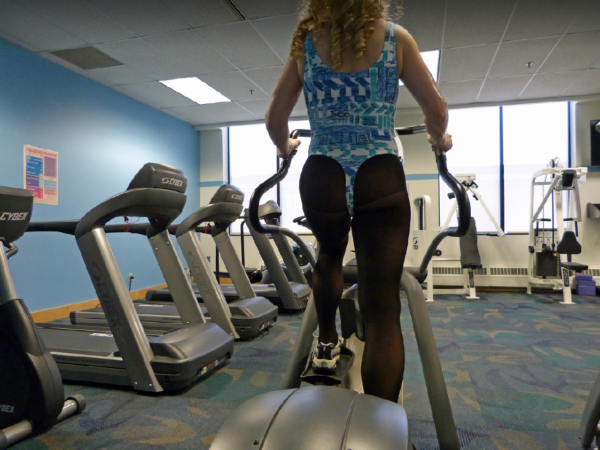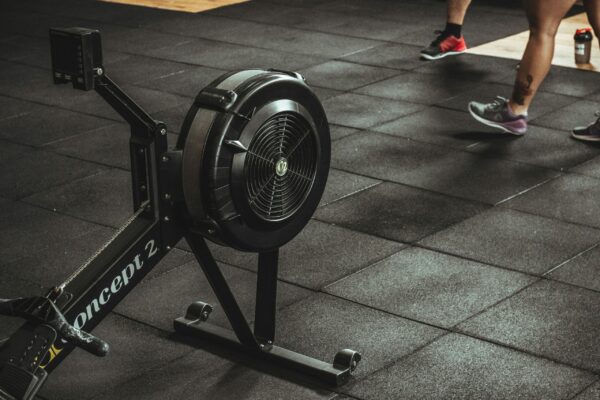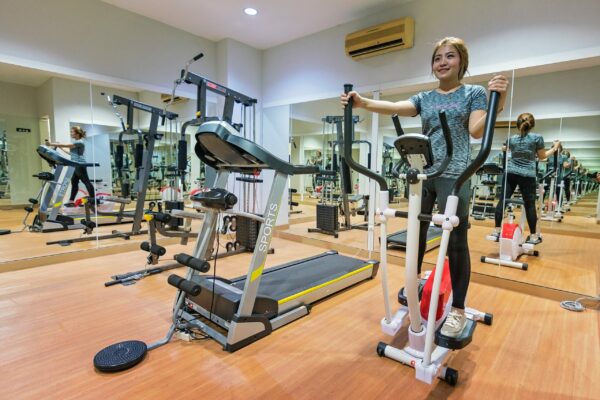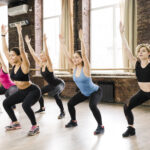Often it can be too one-sided only with running. You easily get into a certain running pattern which is repeated every time you run. This can make the body locked into the same rhythm and thus make it less flexible and more prone to injuries. It can also mean that the motivation to run decreases and you have difficulty in reaching your goals. Improved Running by Cross Training Makes Reliable Results here.
You can create variety in your training with other activities than running, while at the same time strengthening your body and motivation as well as maintaining or increasing your vital oxygen uptake – with Cross training.
Cardiovascular activities
Cardiovascular activities are primarily training the body’s ability to absorb, transport, and utilize oxygen and in the process consume calories i.e. increase fat burning. For this purpose, uses the Cardio machines. These machines are great if you want to maintain or increase your oxygen uptake without running.
But remember training works specifically. We become better at what we do daily because the body adapts to our movements with the physiological adaptations that match those movements and cardiovascular demands. So, Cross-training is not intended to replace running.
In other words, don’t substitute a Two-hour bike ride for a two-hour-long run. Doing it that way will lose the specific benefit of running. Choose your cross-training activities carefully, and schedule these sessions to improve, rather than detract from, your running training.
Functional training

Functional training is training that has a purpose, a function, so your training time uses in the best way in terms of yield. Quantity is not equal to quality. If you train smaller but with a bigger goal-oriented effort, it gives you better training results.
As middle- or long-distance runner who, for example, choose strength training as a supplement, usually just need 7 exercises for the upper body that train the large muscle groups and 2 for the legs.
Functional training in the fitness center, as either cross- or supplemental training aims to make you a better runner in the most efficient way and with the best use of time. The training improves performance and also ensures health and physical versatility through varied training.
A functional training program generally consists of:
- mobility
- flexibility
- posture
- Coordination
- Strength and endurance
- Mental capacity
The beneficial part here is that the exercises in the program should be build-up around the basic movements that occur in both your daily life and when you run:
- Stretch
- Pressure
- bent
- Pull
- Rotation
The mental area can be trained with body/mind – training like, yoga tai chi and Pilates. Movements that train both the body and the mind. You should also Think in movements, not isolated muscles when exercising: What can the body do?
As an example: the shoulder joint, hip joint and spine can both be flexed, stretched and rotated, so all these movements should be included in the training.
Better Fitness

When you choose to start in a fitness center, it’s beneficial with some good tips to get the best out of it:
Warm up Exercises
It’s always a benefit to warm up before physical activities in general. In this way, you make the body ready for the training session. So, warm up in about 5 – 15 minutes with easy physical activity in one of the cardio machines such as the exercise bike or treadmill.
Focus
Avoid too much talk and unnecessarily long breaks. Today, I see many sitting in a machine talking lazily on a mobile phone for many minutes. You need to be Concentrated on the exercise. In that way, you get a lot more out of the training and prevent inexpedient injuries that can occur from inattention – accidents with the weights.
Listen to your body
It’s okay to feel fatigued, maybe even soreness, but never pain. Pain is a signal that something is wrong, and if you feel that, you should stop and get help to fix the problem. Pain prevents proper training, results in a poor training effect and can cause overload injuries.
Use correctly technique
Everything else is a waste of time and It is also risky. Regardless of the type of training, it’s not about taking as many as possible or lifting as heavy as possible, only about doing it right. Muscles don’t care about the number of kilos – they respond to properly done training.
Receive instruction
Whether you are used to training or not or find it easy to learn exercises from the labels on the machine, it’s an advantage to receive instruction. Get help with new exercises and get your training technique corrected, If necessary – ask the instructor in the center.
Choose exercises, that have a purpose
Do not spend time on exercises that are of limited relevance: For example, exclude or minimize specific biceps or triceps training, as you train them in all the pull machines/Push machines, and as distance-runner, it provides strength and endurance enough to hold the arm in place for three hours. If you choose exercises that have a purpose, you need fewer exercises to get the same result.
Being persistent
Especially if you are new, it can be difficult to keep up. But after a short time, you will notice the progress and a whole new feeling in the body, which adapts and reacts with surplus. Be present and enjoy it.
Take relatively few repetitions
8 – 15 of strength exercises. Too many repetitions produce a limited exercise effect, fatigue the nervous system and wear on the body.
Stretching exercises
Short-term, easy stretches to loosen up. More focus on the tight muscles, less on the flexible ones.
Training Volume
The Training Volume per week determines how much you get out of the training. It can be regulated in the following areas below, which is called the FIT formula:
| F | Frequency | How often? |
| I | Intensity | How hard? |
| T | Time | How long? |
Frequency
Is about training frequency, i.e. number of training sessions per week.
Intensity is about the load.
It’s expressed as a percentage of what you can provide maximum – either as a percentage of, the highest possible heart rate, the maximum heart rate, or as a percentage of a maximum lift.
Time indicates the duration of the training
Fitness, training, is calculated in minutes and strength training is in minutes or number of exercises, sets and repetitions. 45 – 60 minutes at a time is appropriate. If you train longer, you risk that the effort becomes weaker and impact your running capacity.
A classic mistake is overtraining – too much training too fast – giving you injuries, pain, fatigue and illness. For beginners or easy experienced who have taken a break, even a relatively easy program can be too much in the beginning. Start easy.
Vary the training volume and intensity
Make sure to vary the training volume and intensity in strength training as well as in fitness training. Variation is necessary to stimulate and develop the body and to prevent the muscles from getting too used to the training, which brings stagnation and no development.
As a beginner, the same program is usually followed in 6 – 8 weeks, after which it changes. Experienced often follow the same program in 1 – 5 weeks. However, the same program can be followed for a longer period, 2-3 months, but once you have become accustomed to the training, the program and exercises must be changed at regular intervals if you want to be sure of progress and maintain the motivation.
The program can be varied by changing exercises, number of sets and repetitions, order, speed or length of breaks or maybe you have your own ideas.
Training technique

An optimal training effect with minimal risk of injury is achieved by sensible exercise choice and correct training technique. Fitness is easy, so most people get a training effect from day one, but as in any other sport, it can take some time before the right technique is learned, so be patient.
Do not exercise without focus in the fitness center – with the wrong training and technique you can risk training yourself in worse shape. Instead, ask a trainer/instructor for help, and take the time to learn the exercises properly before giving yourself fully, and you will achieve a faster and better training outcome. As middle or long-distance runner, you will eventually experience a much greater body awareness and attention, which increases your running economy, running style and the running experience itself.
Once you have chosen your exercises and are ready to get started, you must:
- Be vigorous and concentrated.
- Exercise with correct posture.
- Perform all exercises with control (avoid swinging and turns).
- Exercise the muscle throughout the movement, avoid small, inadequate movements.
- Tighten your muscles throughout the whole exercise – both when you move the resistance, and on the way back (hold back a bit).
- Breathe deeply and calmly through your nose: Inhale with the exertion and inhale on the way back.
- The breath should feel natural and you should not hold your breath.
Cross-Training From Home
Maybe you prefer to do cross-training at home because it’s easier, and in these pandemic times, the rules for training in fitness centers have changed. We all need to pay more attention to our behavior and personal hygiene. So, I have found a really good alternative to training at home. I did not know that there are so many exciting types of workouts you can do from home or for yourself outside the fitness centers – Try this link below:
Final Thoughts
You now have an overview of how you can create variety in your training with other activities than running, while at the same time strengthening your body, mind and motivation as well as maintaining or increasing your vital oxygen uptake in practice.
I hope you like this post and if you have any questions about the topic or want to leave your own Personal review, please leave a comment below.
[faq-schema id=”1875″]







hellloo Henrik Jacobi, wow thanks alot for sharing such an amazing post with us all, i really want to commend your effort in bring such informative site not everyone is priviledge to get quality content like these daily, i run alot but i end up losing breath after running for a while, so i heard someone talking about Cardiovascular activities and he recommended me to yourr site, coming here has really opened my eyes to technics i never had and things i never really knew about, you are the boss, thanks alot
Hi charsleethan1
Thank you for the comment. I really appreciate it. Happy that you can use some of it.
Be Well